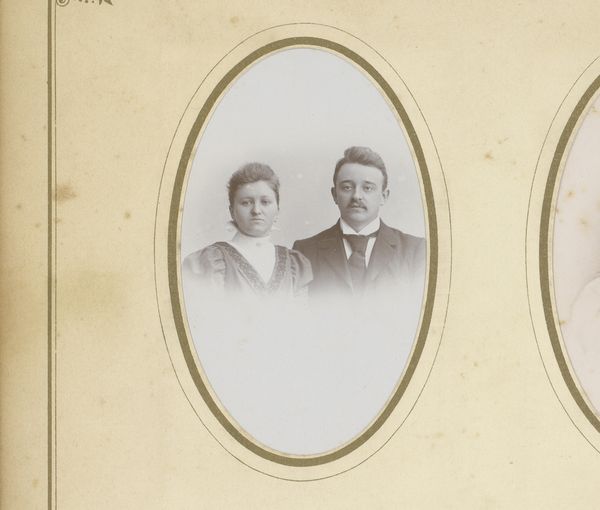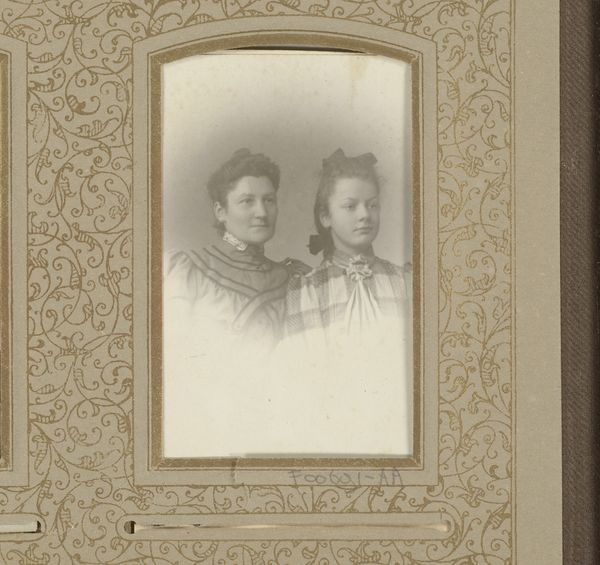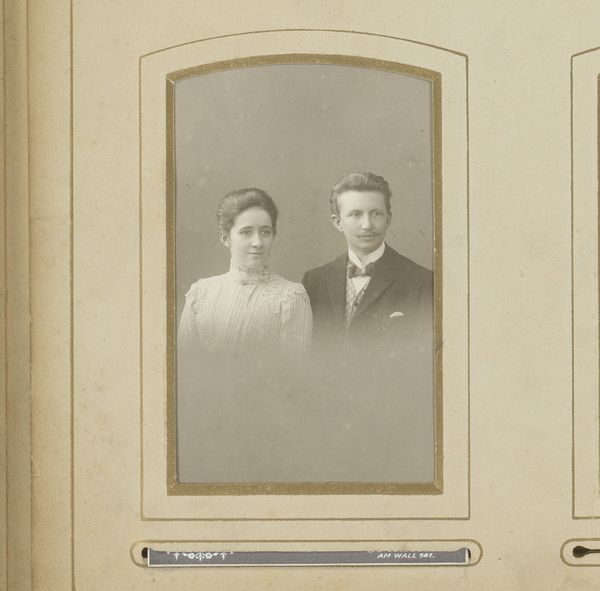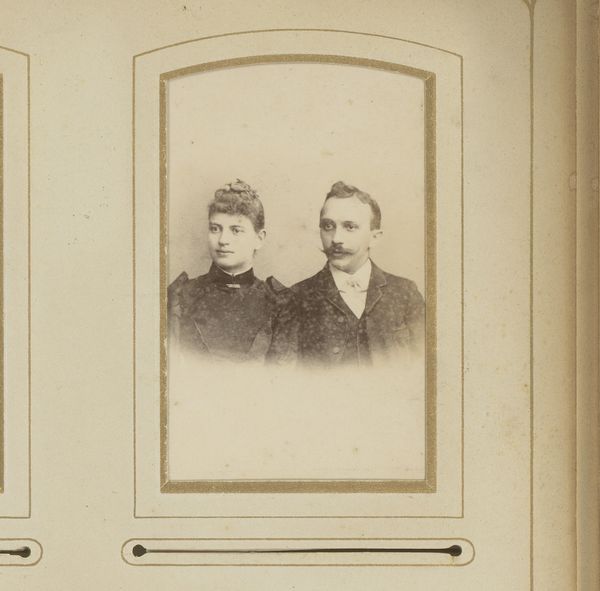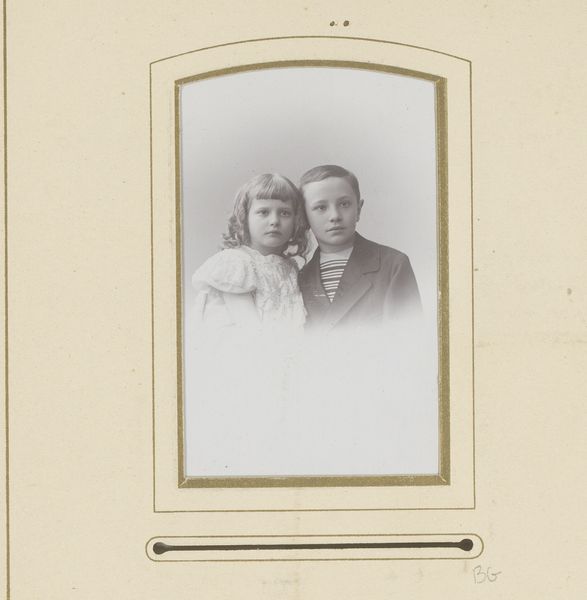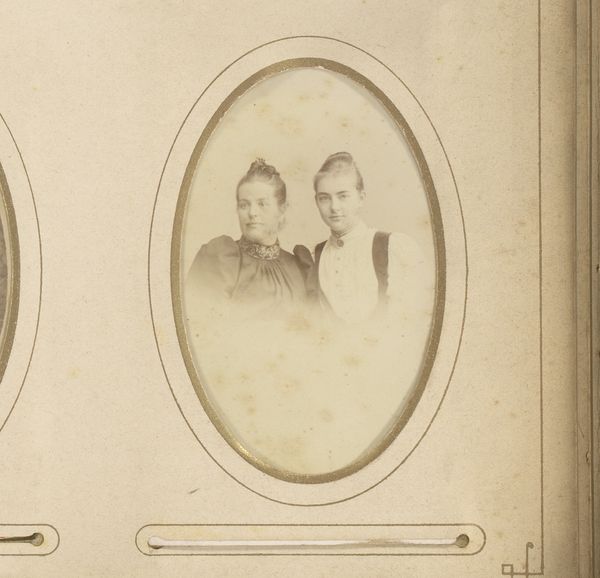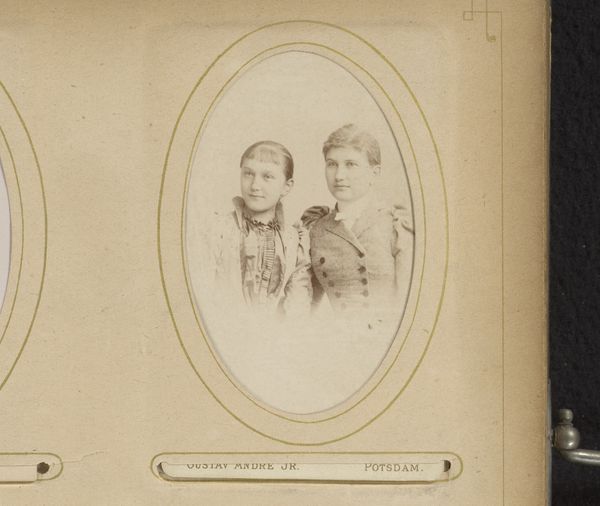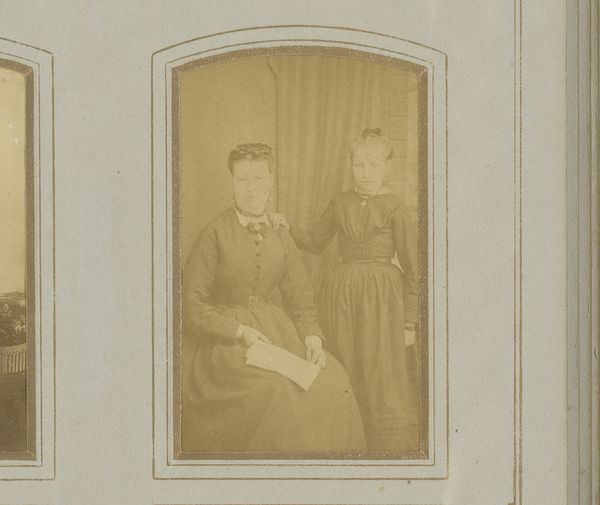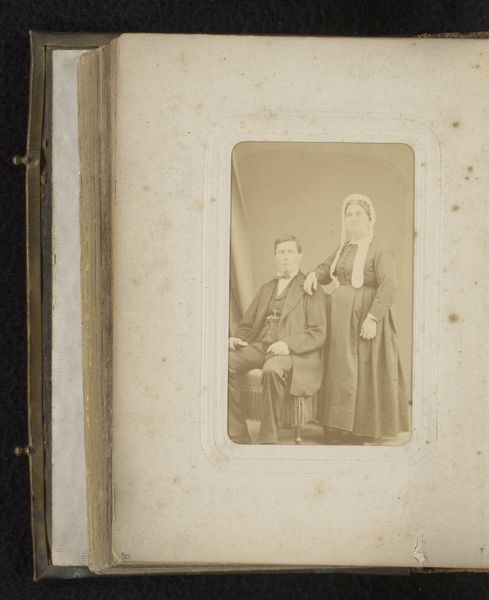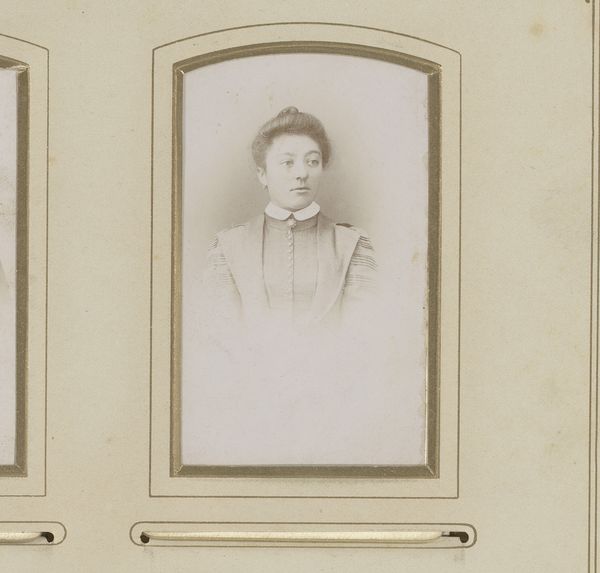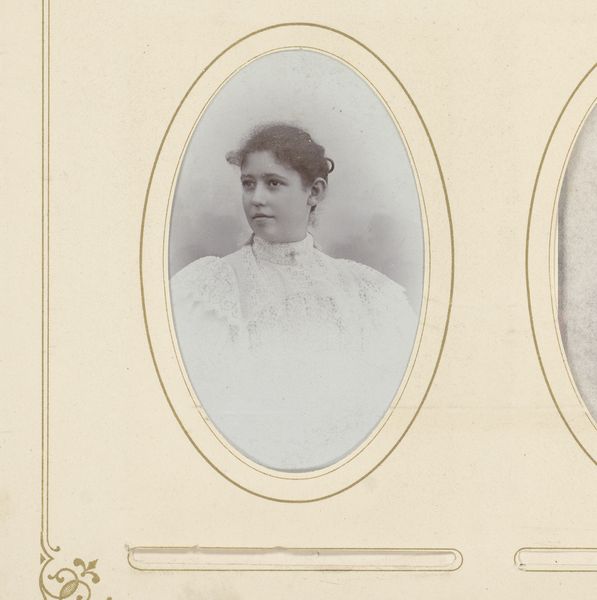
photography, albumen-print
#
portrait
#
earth tone
#
photography
#
group-portraits
#
albumen-print
#
realism
Dimensions: height 84 mm, width 51 mm
Copyright: Rijks Museum: Open Domain
Curator: This is "Portret van een vrouw en meisje" (Portrait of a Woman and Girl), a fascinating albumen print, dating back to between 1890 and 1898, crafted by the lens of J.W. Wentzel. Editor: My first impression is one of understated elegance. The composition is remarkably balanced, with an emphasis on light and the nuanced textures of the clothing, giving the work a certain tonal harmony despite its age. Curator: Indeed, the albumen print process itself is worth noting. This was a labor-intensive technique that involved coating paper with egg white, which was then sensitized with a silver nitrate solution. Think of the photographer in their darkroom, meticulously controlling the variables of exposure and development. The end result, like we see here, could be extraordinarily sharp. It's a fascinating interaction of material and chemistry. Editor: And those details! The lace collars they are wearing. The subtle variations in tone really emphasize their delicate nature and intricate patterns. There's also an almost painterly quality to the rendering of light across their faces, subtly revealing the structures of their features. Curator: And how might the rise of photographic portraiture influence society and culture at the time? For example, think of the working classes who may not have been able to afford a painted portrait but can have access to photographs. I'm also curious about who made those lace collars. And were they worn? It can't be a coincidence they were worn only in special photographs such as these. Editor: You raise very important points, certainly. Yet, I still gravitate towards the image itself. Note how the slight variations in light across their faces subtly define their forms, enhancing the realism of the work. Curator: Seeing such artifacts reminds us of their humanity, of their connection to the past. What stories were wrapped within each emulsion and choice? It connects us to the economic realities and lived experiences of people. Editor: I think that examining how light and texture work to give dimension, how a flat picture seems to come alive, provides insight. It goes to the artist's understanding of forms in a certain space. Curator: Seeing how this kind of image comes out into society gives us an idea of the life it had at its time, beyond mere aesthetics, isn't that more interesting? Editor: Perhaps! It offers unique depth when considered alongside historical perspective, however I find immense pleasure looking solely at form and balance, as if peering into some new visual reality.
Comments
No comments
Be the first to comment and join the conversation on the ultimate creative platform.
